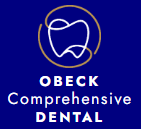To all those that read this newsletter, thank you. I hope you find this monthly newsletter educational and interesting; perhaps it may even answer some questions about oral health that you may have been pondering. This month’s topic is the science of cavity formation and the various factors that exacerbate it.
Dental caries (also known as “dental decay” or a “cavity”) is a disease process in which the various layers of a tooth are broken down in the presence of bacteria. A species of bacteria called Streptococcus mutans is primarily responsible for the formation of cavities. Streptococcus mutans is a naturally occurring bacteria in the mouth that forms complex colonies with other bacteria to create plaque on our teeth. These colonies of bacteria feed on carbohydrates (or sugars) from the food we eat and produce lactic acid as a byproduct.
It is important to understand that the acidic oral environment created by Streptococcus mutans causes demineralization of our teeth. The lactic acid these bacteria produce coats our teeth and starts to strip away and erode the outermost layer of our teeth known as enamel. When our teeth become demineralized by acid, they become more porous and allow the bacteria to infiltrate deeper into the tooth like termites eating through wood. When a tooth has become so demineralized that bacteria penetrate the second layer of our teeth called dentin, it is necessary to intervene by placing a filling or sometimes a crown.
Enamel is the outermost layer of our teeth and the hardest substance found in the body. It contains no nerves and is mostly made of minerals, like calcium and phosphate. Dentin is much spongier and softer than enamel; it is composed of 75% minerals and 25% organic material. Dentin has nerve endings present, which allows our teeth to feel sensations like hot, cold, biting pressure, and pain. Cavities grow much larger and they spread quicker when the bacteria reach dentin. Cavities usually are not painful when they are small. Cavities only become painful when they get so big that they get close to the innermost layer of our teeth known as pulp. Pulp is composed of blood vessels and nerves that make up the core of our teeth. When a cavity reaches the pulp, a root canal is necessary to clean out the blood vessel and nerve of the tooth and remove the bacteria.
The following factors all contribute to a higher risk of cavity formation and create a more acidic environment for bacteria to thrive: poor oral hygiene resulting in greater plaque buildup, having low salivary flow and dry mouth, consumption of sugary and acidic beverages like soda, juice and energy drinks, consumption of sticky sugary foods like pastries, cookies and candy that stick to our teeth, the presence of existing dental work (fillings and crowns) with microscopic nooks and crannies for bacteria to hide, lack of access to fluoridated water, family history of frequent cavities, head and neck radiation from cancer treatment, snacking intermittently throughout the day, and not having your teeth cleaned periodically. If you have many of these factors at the same time, it creates an exponential risk for cavity formation.
Interestingly, our mouths are constantly going through cycles of tooth demineralization and remineralization depending on the pH of our mouth. If your mouth is more acidic, the scale is tipped towards tooth demineralization and cavity formation. However, if your mouth is more basic, the scale is tipped toward remineralization of enamel and prevention of cavity formation. Saliva has a basic pH and it is your body’s crucial defense mechanism for neutralizing the acid formed by Streptococcus mutans and other plaque bacteria. Fluoride is another crucial defense against cavity formation because fluoride ions (found in public drinking water and most toothpastes) incorporate themselves into our tooth structure and reinforce the teeth which prevents cavity formation.
If you are concerned about your risk for developing cavities or your history of previous cavities, please talk to me or Dr. Krist about it. We can prescribe high concentration fluoride toothpaste and oral probiotics, perform saliva testing to determine the levels of bacteria in your mouth, examine your teeth, and take x-rays to check if cavities have formed in hard to see places. And remember… “Cavities usually don’t hurt unless they are really big!”
Sincerely,
John Obeck DDS
